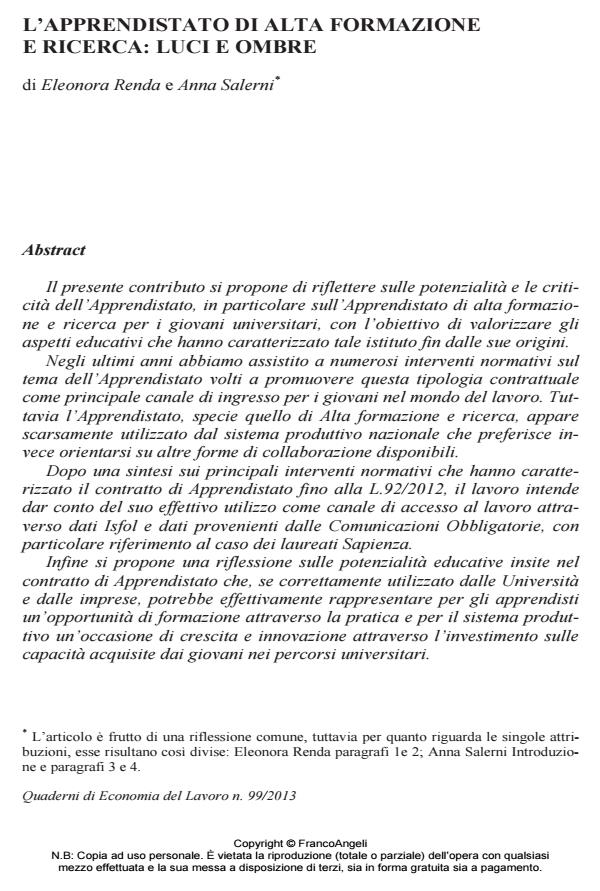L’apprendistato di alta formazione e ricerca: luci e ombre
Journal title QUADERNI DI ECONOMIA DEL LAVORO
Author/s Eleonora Renda, Anna Salerni
Publishing Year 2013 Issue 2013/99
Language Italian Pages 24 P. 49-72 File size 684 KB
DOI 10.3280/QUA2013-099004
DOI is like a bar code for intellectual property: to have more infomation
click here
Below, you can see the article first page
If you want to buy this article in PDF format, you can do it, following the instructions to buy download credits

FrancoAngeli is member of Publishers International Linking Association, Inc (PILA), a not-for-profit association which run the CrossRef service enabling links to and from online scholarly content.
This paper aims at highlighting the strengths and weaknesses of the Apprenticeship, in particular of the Higher Education and Research Apprenticeship for young university students: the goal is to promote the educational aspects that have always characterized this kind of contract since its origin. Over the last few years, we have seen many regulatory interventions on the Apprenticeship, aimed at promoting this kind of contract as the main input channel for the youth to enter the labour market. However, the Apprenticeship, particularly the Higher Education and Research one, seems to be barely used by the national productive system, that prefers, instead, to opt for other available forms of work cooperation. After a summary of the main regulatory interventions that have distinguished the Apprenticeship contract up to the Law 92/2012, this research intends to report its actual use as an input channel to enter the labour market, through data from Isfol and from the Mandatory Communications, with particular reference to the case of "La Sapienza", University of Rome’s graduates. Finally, the research proposes a reflection about the inherent educational potentialities of the Apprenticeship contract: if properly used by Universities and enterprises, in fact, the contract could represent a real opportunity for the apprentices in terms of on-the-job training. On the other end, it could be a chance of growth and innovation for enterprises, through the investment on the skills gained by young graduates during their university studies.
- La dimensione della pratica nella formazione dell'educatore: la tutorship come strumento di elaborazione del role model Barbara Barbieri, Giordana Szpunar, in EDUCATIONAL REFLECTIVE PRACTICES 2/2015 pp.123
DOI: 10.3280/ERP2014-002008
Eleonora Renda, Anna Salerni, L’apprendistato di alta formazione e ricerca: luci e ombre in "QUADERNI DI ECONOMIA DEL LAVORO" 99/2013, pp 49-72, DOI: 10.3280/QUA2013-099004